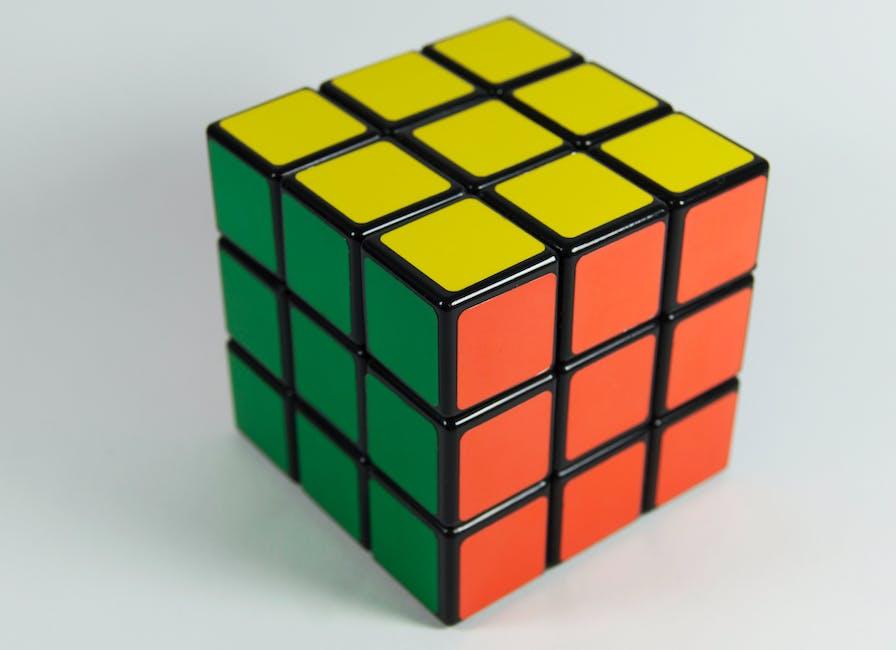Changing confusion into clarity is like turning a foggy morning into a bright, sunny day. It’s about transforming uncertainty into understanding and using that newfound insight to move forward with confidence. But how do we do that? And why does it matter so much? Stick around, because this journey from confusion to clarity might just change the way you see yourself and the world around you.
Key Takeaways
- Confusion is a natural part of life, but it doesn’t have to hold you back.
- Seeking clarity can lead to personal growth, better decisions, and stronger relationships.
- Strategies like self-reflection, mindfulness, and open communication can help you find clarity.
Understanding the Nature of Confusion
Defining confusion and its impact on decision-making
Confusion is that unsettling feeling when nothing seems to make sense. It’s like trying to solve a puzzle with missing pieces.
When confusion strikes, it can cloud your judgment and make decision-making feel impossible. You might second-guess yourself or avoid making choices altogether.
But here’s the thing: confusion isn’t the enemy. It’s a signal that something needs your attention. It’s your brain’s way of saying, “Hey, let’s figure this out!”
Common sources of confusion in daily life
Life throws curveballs at us all the time. Confusion can come from overwhelming information, conflicting emotions, or even societal pressures.
For example, have you ever felt torn between what you want and what others expect of you? That’s a classic recipe for confusion.
Sometimes, confusion stems from big life questions like, “What’s my purpose?” or “Am I on the right path?” These are tough questions, but they’re also opportunities for growth.
The emotional and mental toll of prolonged uncertainty
Living in a state of confusion can be exhausting. It’s like carrying a heavy backpack everywhere you go.
Prolonged uncertainty can lead to stress, anxiety, and even burnout. It can make you feel stuck, like you’re spinning your wheels but not getting anywhere.
But here’s the good news: you don’t have to stay in that fog forever. With the right tools and mindset, you can turn confusion into clarity.

The Importance of Seeking Clarity
How clarity transforms confusion into purpose
Clarity is like a flashlight in the dark. It helps you see where you’re going and why you’re going there.
When you gain clarity, you can turn confusion into a sense of purpose. Instead of feeling lost, you feel empowered to take action.
The role of self-reflection in achieving clarity
Self-reflection is a powerful tool for finding clarity. It’s about taking a step back and asking yourself, “What’s really going on here?”
Journaling, meditation, or even a quiet walk can help you sort through your thoughts and emotions.
If you’re curious about how self-reflection can shape your reality, check out this guide on affirmations and their power.
Benefits of clarity in personal and professional growth
Clarity isn’t just about feeling better—it’s about doing better.
In your personal life, clarity can improve your relationships by helping you communicate more effectively.
In your career, clarity can help you set goals, make decisions, and stay focused on what matters most.

Strategies for Turning Confusion Into Clarity
Engaging with diverse perspectives to broaden understanding
Sometimes, the best way to find clarity is to look at things from a different angle.
Exploring cultural and societal influences on identity
Our identities are shaped by the cultures and societies we live in. Understanding these influences can help you make sense of who you are and what you value.
Learning from others’ experiences and viewpoints
Talking to people with different perspectives can be eye-opening. Their stories might help you see your own situation in a new light.
Breaking down complex issues into manageable steps
When you’re overwhelmed, it’s easy to feel stuck. But breaking a problem into smaller steps can make it more manageable.
Think of it like eating an elephant—one bite at a time.
Utilizing mindfulness and meditation to clear mental clutter
Mindfulness and meditation are like hitting the reset button on your brain.
They help you focus on the present moment and let go of the mental clutter that’s clouding your judgment.
If you’re interested in exploring how we interpret and make sense of the world, this article might resonate with you: How we make sense of the world.

Tools and Resources for Gaining Clarity
Leveraging privacy-focused platforms for open discussions
Creating safe spaces for honest communication
Sometimes, you just need a safe space to talk things out. Privacy-focused platforms can provide that space.
Encouraging respectful dialogue on sensitive topics
Respectful dialogue can help you explore sensitive topics without fear of judgment.
Inspirational quotes as catalysts for personal reflection
A good quote can be like a spark that lights a fire.
For example, Tom Bilyeu once said, “20 years ago, I’d waste 5 hours every morning in bed thinking, planning, dreaming. Today, I act.” (source)
Partnering with organizations that promote clear communication
Organizations that focus on clear communication can provide valuable resources and support.

Applying Clarity to Youth Culture and Identity
Navigating the crossroads of identity and societal expectations
Young people often find themselves at the crossroads of identity and societal expectations.
This can be a confusing time, but it’s also an opportunity to explore who they are and what they stand for.
Addressing confusion in youth culture through education and mentorship
Education and mentorship can play a big role in helping young people find clarity.
If you’re interested in this topic, check out this resource on youth culture and clarity.
Highlighting top resources and posts that explore clarity in youth issues
There are plenty of resources out there to help young people navigate their journey to clarity.

The Role of Communication in Achieving Clarity
The power of clear and concise messaging
Clear communication is like a bridge that connects people.
When you express yourself clearly, you’re more likely to be understood and less likely to be misunderstood.
Building trust through transparent communication
Transparency builds trust. When you’re open and honest, people are more likely to trust you and feel comfortable sharing their own thoughts.
Amplifying efforts with organizations focused on clarity
Partnering with organizations that prioritize clarity can amplify your efforts to communicate effectively.
The Long-Term Impact of Clarity
How clarity fosters resilience and adaptability
Clarity helps you bounce back from challenges.
When you know what you’re working toward, it’s easier to adapt and keep moving forward.
The ripple effect of clarity on relationships and communities
Clarity doesn’t just benefit you—it benefits everyone around you.
When you’re clear about your values and goals, you inspire others to do the same.
Sustaining clarity through continuous learning and growth
Clarity isn’t a one-time thing. It’s a journey.
By staying curious and open to learning, you can maintain clarity and keep growing.
If you’re looking for ways to find meaning and purpose in life, this article might be a good starting point: Finding meaning and purpose.

Changing confusion into clarity isn’t always easy, but it’s worth it.
It’s about embracing the messiness of life and using it as a stepping stone to something greater.
So, the next time you feel confused, don’t see it as a roadblock.
See it as an invitation to grow, learn, and find your way forward.
FAQ: Turning Confusion Into a Quest for Clarity – Your Path to Understanding
What does it mean to turn confusion into clarity?
Turning confusion into clarity involves identifying the root causes of your uncertainty, breaking down complex ideas, and organizing thoughts to gain a better understanding of a situation or concept. It’s about transforming overwhelming feelings into actionable insights and solutions.
Why is it important to embrace confusion rather than avoid it?
Confusion is often a sign of growth and learning. Embracing it allows you to explore new perspectives, challenge assumptions, and deepen your understanding. Avoiding confusion can hinder progress, while facing it head-on can lead to personal and intellectual development.
What are some practical steps to overcome confusion?
Practical steps include breaking down the problem into smaller parts, asking questions, seeking guidance from experts, and using tools like mind maps or lists to organize thoughts. Taking a step back to reflect and giving yourself time to process can also be helpful.
How can mindfulness help in gaining clarity?
Mindfulness helps by grounding you in the present moment, reducing mental clutter, and fostering a calm state of mind. This clarity allows you to approach confusion with a focused perspective, making it easier to identify solutions and insights.
What role does curiosity play in transforming confusion into clarity?
Curiosity drives you to ask questions, explore possibilities, and seek deeper understanding. It shifts your mindset from frustration to discovery, turning confusion into an opportunity to learn and grow.
Are there tools or techniques to help organize thoughts during moments of confusion?
Yes, tools like journaling, mind mapping, and brainstorming can help organize thoughts. Techniques such as prioritizing tasks, setting clear goals, and using frameworks like the 5 Whys or SWOT analysis can also provide structure and clarity.
How can I stay motivated when confusion feels overwhelming?
Remind yourself that confusion is a natural part of the learning process and focus on small, achievable steps. Celebrate progress, seek support from others, and maintain a growth mindset to stay motivated during challenging times.
Can confusion ever be a positive experience?
Absolutely! Confusion can be a catalyst for creativity, innovation, and self-discovery. It encourages you to think critically, explore new ideas, and develop resilience, ultimately leading to personal and intellectual growth.
How can I help others who are struggling with confusion?
Listen actively, offer encouragement, and provide guidance without judgment. Share resources, ask open-ended questions to help them reflect, and remind them that confusion is a normal and temporary part of the learning process.
What are some long-term benefits of learning to navigate confusion effectively?
Learning to navigate confusion builds problem-solving skills, emotional resilience, and adaptability. Over time, it enhances your ability to approach challenges with confidence, fosters lifelong learning, and empowers you to tackle complex situations with clarity and purpose.



